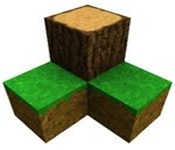 GTA Games
GTA Games
 Minecraft Games
Minecraft Games
 Run Games
Run Games
 Talking Games
Talking Games
 Horror Games
Horror Games
 Car Games
Car Games
 Shooting Games
Shooting Games
 IO Games
IO Games
 Music Games
Music Games
 Stickman Games
Stickman Games
 Girl Games
Girl Games
 Action Games
Action Games
 Zombie Games
Zombie Games
 Soccer Games
Soccer Games
 Survival Games
Survival Games
 Adventure Games
Adventure Games
Ladders Description:
Ladders is an addictive game where the player must collect ladders to overcome obstacles and reach the finish line.The defining feature of Ladders is, of course, the presence of ladders and chutes on the board. Ladders represent opportunities for rapid advancement. When a player's game piece lands on the bottom square of a ladder, they can immediately move their piece up to the top square of the ladder, skipping several squares in the process. This can give players a significant advantage and help them quickly catch up to or overtake their opponents.Conversely, chutes are obstacles that send players sliding down the board. If a player's piece lands on the top square of a chute, they are forced to move their piece down to the bottom square of the chute, losing progress and potentially falling behind. The placement of ladders and chutes on the board is carefully designed to create a balance between luck and strategy, as players never know when they might encounter a helpful ladder or a dreaded chute.One of the key aspects of advanced gameplay in Ladders is the ability to analyze the risk - reward ratio. Players often face decisions when approaching squares near ladders and chutes. A cautious player might try to avoid landing on such squares to prevent the risk of sliding down the chute, while a more daring player might take the chance in hopes of reaching the ladder. Players need to consider not only their own position but also the positions of their opponents. Sometimes, taking a calculated risk can pay off big, but it can also lead to setbacks if luck isn't on the player's side.In multiplayer games of Ladders, anticipating the moves of opponents adds an extra layer of strategy. Players can observe the positions of their opponents' pieces and try to predict where they might land on their next turn. This can be especially useful when planning one's own moves.For example, if an opponent is close to the top of a long chute, a player might try to position themselves in a way that takes advantage of the opponent's potential setback. On the other hand, if an opponent is approaching a powerful ladder, a player might focus on catching up or finding a way to block the opponent's progress, depending on the game situation.Timing is everything in Ladders. Knowing when to push for a risky move and when to play it safe is a skill that develops with experience. Rushing to reach the finish line without considering the consequences can often lead to falling down chutes and losing ground.Patience is also a virtue in this game. Sometimes, waiting for the right roll of the die to reach a ladder or avoid a chute can be more beneficial than making hasty moves. Experienced players understand the importance of biding their time and capitalizing on opportunities when they arise.Ladders offers several educational benefits, particularly in the development of mathematical skills. Players also need to calculate the potential outcomes of their moves based on the number rolled on the die. This requires an understanding of addition and subtraction, as they must determine how many squares they will move forward or backward. Over time, regular play can enhance players' mental math abilities and numerical fluency.Ladders requires strategic thinking and problem - solving. Players must analyze the board layout, consider the positions of ladders and chutes, and plan their moves accordingly. This helps to develop logical reasoning skills and the ability to make decisions based on potential risks and rewards.When faced with a difficult situation, such as being close to a chute but also within reach of a ladder, players need to think critically about the best course of action. This kind of strategic thinking is not only valuable in the game but also in real - life situations where decision - making skills are essential.Before starting a game, new players should take the time to familiarize themselves with the board layout. Pay attention to the positions of the ladders and chutes, as this knowledge will be crucial when planning moves. Understanding which areas of the board are more risky and which offer opportunities for advancement can give new players an edge.When first starting out, it's advisable to focus on simple strategies. Avoid taking unnecessary risks, especially in the early stages of the game. Instead, aim to move steadily forward and gradually build up a position. As players gain more experience, they can start to experiment with more complex strategies.Whether it's a successful move that led to a big advancement or a mistake that caused a setback, new players should reflect on their experiences. Analyze what went well and what could be improved, and use this knowledge to enhance their gameplay in future games.So, Ladders is a game that combines simplicity, strategy, and entertainment. Turn left and right to collect ladder pieces and dodge obstacles.














































